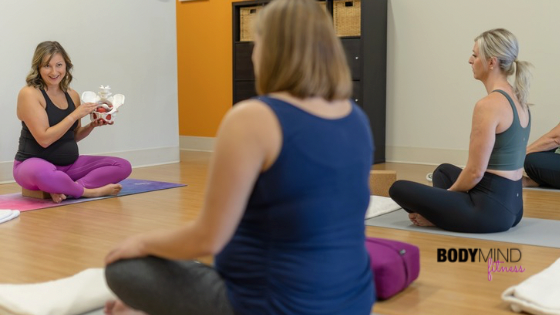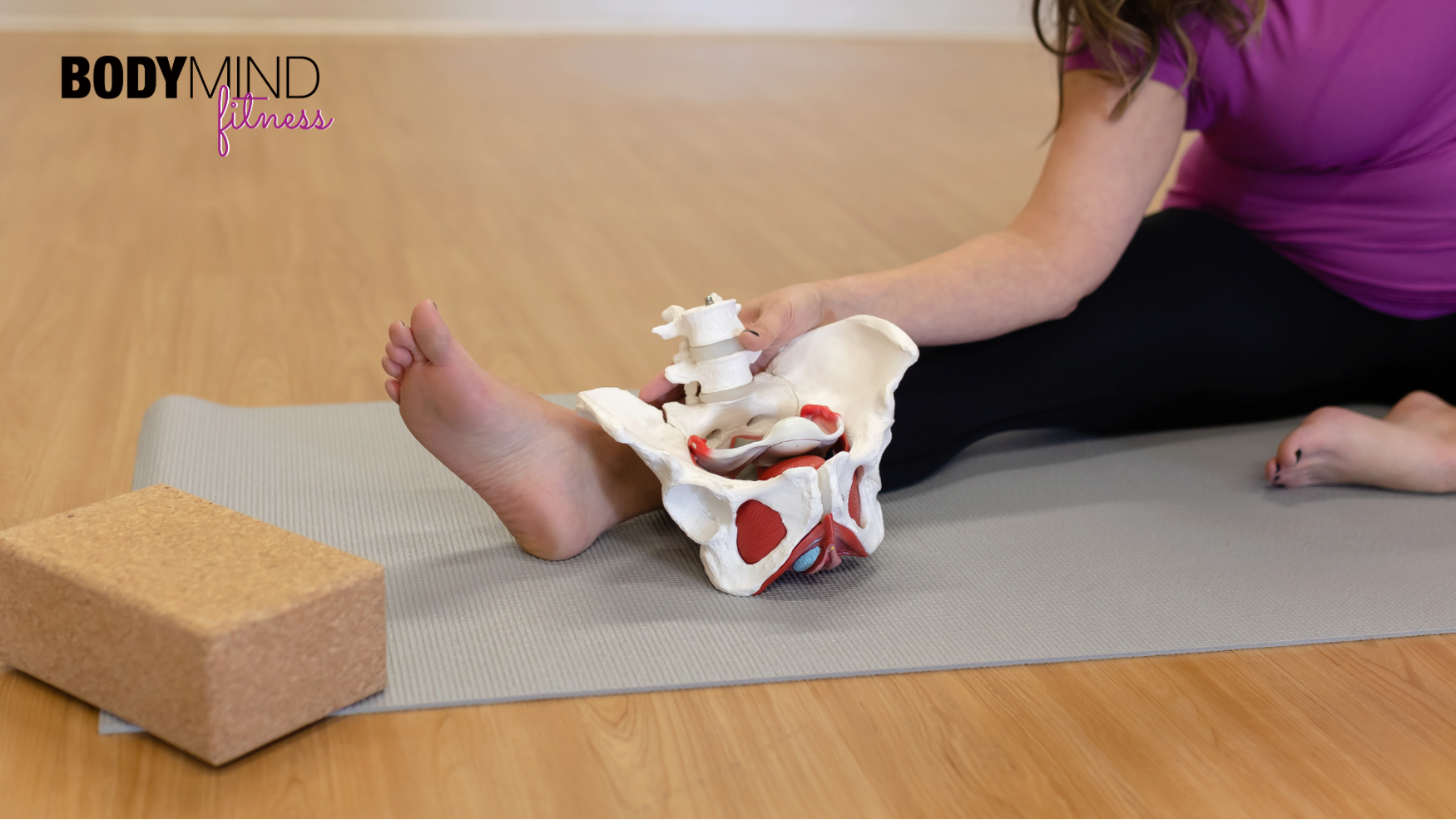There's an assumption that Pelvic Floor Dysfunction is something that just happens because we gave birth, or because we are aging.
In reality there are a number of factors: Pregnancy and Age for starters, but also Injury/Surgery, Larger Bodied Indviduals, Vaginal and C-Section Births, and even Athleticism. On top of that it doesn’t even matter if you are female or male.
Before we go any further, I would like to take and moment to say that personally, I don't really like the term "Pelvic Floor Dysfunction" - it sounds scary, right? It is the medical term, but with that being said from here on out, I will be referring to Pelvic Floor Dysfunction as Pelvic Floor Concerns, a phrase we can hopefully have an open dialog around without the stigma.
For your consideration, incontinence is one of the main reasons that patients are admitted to Extended Care facilities second only to Alzheimers. This is bonkers considering there are things we can do to prevent and manage Pelvic Floor Concerns including but not limited to incontinence -ie. peeing your pants.
What other concerns are we talking about?
- Leaking Urine or Stool
- Pressure or Pain “Down There”
- Pelvic Organ Prolapse (POP)
- Uncomfortable or Painful Sex
- Lower Back & Pelvic Pain
- Diastasis Recti
- Constipation
- Urinary Urgency & Frequency
- Interstitial Cystitis (painful bladder syndrome)
- Chronic Prostatitis (inflamation of the prostate)
- Endometiosis
- Irritable Bowel Syndrome (IBS)
- Issues with pregnancy or postpartum recovery
- Scar Tissue
- Infertility
- ... and more
We are taught that this is just part of being a woman and to "go home and do your kegels", or throw on panty liners and prance happily through fields. It's so much more than that.
A common misconception is that when we experience Pelvic Floor Concerns it is a sign of weakness whereas lifestyle actually plays a much bigger role. I was well on my way to Pelvic Floor Dysfunction starting in the 2nd grade. We were sitting in an assembly on the gym floor, my posture was on point, and I looked around the gym and saw everyone else was hunched over. Being a typical 7 year old I didn't want to stand out, I immediately changed my posture to fit in with everyone else, even though it was uncomfortable when this whole thing began.
For me particularly, it was pregnancy - all of them, that exacerbated my symptoms.
At 8 months postpartum with Baby #1, I was cooking in the kitchen and peed my pants. No jumping, sneezing, laughing, or running required - it just happened.
As soon as Baby #2 vacated the premises, I looked at my husband and said, "I just gave myself a Prolapse." Fun Fact: I did, but by my 6 weeks checkup, it was barely there.
So where do you start?
Posture and Breath can go a long way to improving the function of the pelvic floor.

The simple act of ensuring the rib cage is stacked over top of the pelvis can drastically encourage better breathing patterns. In this position the diaphragm (breathing muscle) lines up with the pelvic floor (also a breathing muscle), and are better able to mirror each other. That's right - the pelvic floor and diaphragm are BFFs and like to do everything together - moving downward and releasing on the in-breath, and rising and lifting on the out-breath.
Throw in some PROPER Kegels if and when appropriate - and you are GOLDEN.
What is a proper Kegel?
According to Dictionary.com it is described as:.
Kegel/ˈkāɡəl/noun
denoting exercises performed by a woman to strengthen the pelvic floor muscles, involving repetitions of both sustained and rapid voluntary contractions of the muscles and used especially to treat urinary incontinence and improve sexual function.
Where many miss the mark, including Dictionary.com is that Kegels involve a contraction (squeeze) and a lift, plus a release. So yes, you may be doing them wrong (more on that in a bit).
The Pelvic Floor needs to have the ability to contract AND relax.
So, the idea of “going home and doing your Kegels" - is not entirely accurate. What makes it even more confusing is that some of the symptoms that arise when the Pelvic floor is hypertonic (too tense) or hypotonic (too relaxed) can look very similar, and in some cases there are no symptoms at all.
Would it surprise you if I told you that there is about a 50% chance that kegels could make things worse for you? According to studies, 50% of us are walking around with Pelvic Floors that are hypertonic (too tense)!
To put it plainly in addition to injury/surgery or trauma, we are stressed, really stressed. Money, illness, work, relationships, and countless other stressors exist as we navigate our daily lives. When we are stressed we hold onto tension in the body. Commonly in places such as the shoulders, and jaw - but tension can often be held in the muscles of the Pelvic Floor as well. Pain associated with the Pelvic Floor can be an indicator that tension could be the problem.
There are a lot of "coulds" and "maybes" in regards to Pelvic Health, isn't there? So what can you do?
I always recommend a visit to your friendly neighbourhood Pelvic Floor Physiotherapist. One meeting will give you the information of what exactly is happening down there and steps you can make to start improving your Pelvic Health.
When it comes to movement and exercise - find a Coach who is well versed in the anatomy of the Core & Pelvic Floor to help you manage and prevent symptoms during your favourite fitness pastimes.
Join us for Yoga for Core + Pelvic Health where you will find specialized attention in a group setting in a welcoming environment. And your first class is only $10!
namaste.
 Dominique Gauthier is a wife, mama to 4 (2 Bonus Kids + 2 Rainbow Babies), and the boss babe behind Body Mind Fitness located in London (Lambeth), ON. As a Personal Trainer and Yoga Teacher, she helps women from all walks of life to feel STRONG, SEXY and HEALTHY. Providing specialized training to manage and prevent symptoms of Core & Pelvic Floor Dysfunction to lead an active lifestyle with education and a body-positive sustainable approach to becoming their best selves.
Dominique Gauthier is a wife, mama to 4 (2 Bonus Kids + 2 Rainbow Babies), and the boss babe behind Body Mind Fitness located in London (Lambeth), ON. As a Personal Trainer and Yoga Teacher, she helps women from all walks of life to feel STRONG, SEXY and HEALTHY. Providing specialized training to manage and prevent symptoms of Core & Pelvic Floor Dysfunction to lead an active lifestyle with education and a body-positive sustainable approach to becoming their best selves.





